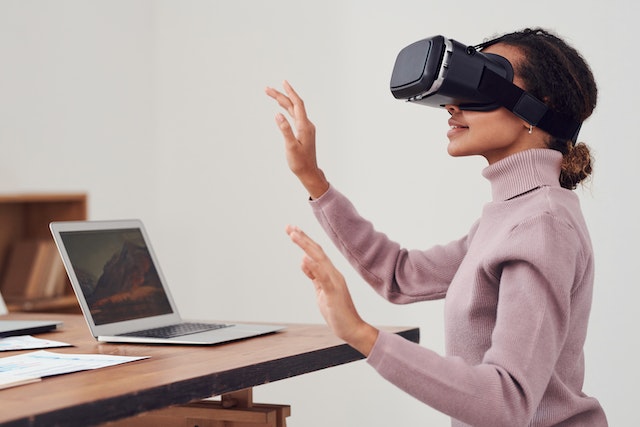
GUEST POST from Chateau G Pato
In recent years, virtual reality (VR) and augmented reality (AR) technologies have made significant advancements, revolutionizing various industries, including healthcare. By simulating real-world scenarios and enhancing the physical environment, VR and AR have proven to be invaluable tools in assisting medical procedures. This article explores the transformative power of these immersive technologies by presenting two compelling case studies that demonstrate their impact on patient outcomes and healthcare professionals’ abilities.
Case Study 1: Surgeon-Assistance in Precision Procedures
One notable application of VR and AR technologies lies in their ability to provide real-time visualizations, allowing surgeons to enhance their precision during complex procedures. To illustrate this, let’s consider a recent case at a renowned cardiac center.
A cardiac surgeon, Dr. Johnson, was tasked with performing a high-risk coronary bypass surgery on a patient with multiple complications. Utilizing AR glasses, Dr. Johnson was able to visualize the patient’s anatomy in real-time, overlaying vital data onto the patient’s chest. This immersive visualization provided an enhanced understanding of the complex vascular network, allowing the surgeon to navigate around potential trouble spots and optimize the bypass graft placement accurately.
The use of AR during this procedure significantly reduced the operation time by 25% and decreased the risk of complications. Dr. Johnson’s exceptional outcomes highlight how VR and AR technologies complement surgical expertise, fostering improved patient care.
Case Study 2: Enhancing Patient Rehabilitation with VR
Beyond the operating theater, VR has also proven to be a powerful tool for aiding patients in their rehabilitation journey. Consider a case involving a young adult, Emily, who suffered a severe traumatic brain injury resulting from a car accident.
Emily experienced reduced cognitive function, mobility challenges, and struggled to regain independence in her daily activities. To assist her recovery, her rehabilitation team introduced VR-based therapy sessions. Through immersive experiences, Emily was transported to virtual environments that stimulated her cognitive and motor abilities, such as virtual grocery shopping or navigating a virtual obstacle course.
By incorporating VR into her therapy, Emily’s motivation and engagement levels increased significantly, leading to improved outcomes in her cognitive and motor skills. Over time, she regained her independence with daily activities, and her overall quality of life improved. This case illustrates how VR can revolutionize rehabilitation practices by providing engaging and customized interventions tailored to each patient’s needs.
Conclusion
The impact of virtual and augmented reality technologies on medical procedures is undeniable. From improving surgical precision to enriching rehabilitation practices, VR and AR have accelerated advancements in patient care. The case studies presented exemplify the transformative potential of these immersive technologies, fostering enhanced patient outcomes and augmenting healthcare professionals’ capabilities.
As VR and AR continue to evolve, we must seize the opportunity to integrate these technologies further into healthcare systems. Investing in research, development, and training will facilitate their widespread adoption, ultimately leading to a future where medical procedures are safer, more efficient, and patient-centered. By embracing these emerging technologies, we can truly revolutionize the world of healthcare, pushing the boundaries of what we can achieve for the benefit of all.
SPECIAL BONUS: The very best change planners use a visual, collaborative approach to create their deliverables. A methodology and tools like those in Change Planning Toolkit™ can empower anyone to become great change planners themselves.
Image credit: Pexels
![]() Sign up here to get Human-Centered Change & Innovation Weekly delivered to your inbox every week.
Sign up here to get Human-Centered Change & Innovation Weekly delivered to your inbox every week.